J. Liu
PR-NET: Leveraging Pathway Refined Network Structures for Prostate Cancer Patient Condition Prediction
Mar 12, 2024Abstract:The diagnosis and monitoring of Castrate Resistant Prostate Cancer (CRPC) are crucial for cancer patients, but the current models (such as P-NET) have limitations in terms of parameter count, generalization, and cost. To address the issue, we develop a more accurate and efficient Prostate Cancer patient condition prediction model, named PR-NET. By compressing and optimizing the network structure of P-NET, the model complexity is reduced while maintaining high accuracy and interpretability. The PR-NET demonstrated superior performance in predicting prostate cancer patient outcomes, outshining P-NET and six other traditional models with a significant margin. In our rigorous evaluation, PR-NET not only achieved impressive average AUC and Recall scores of 0.94 and 0.83, respectively, on known data but also maintained robust generalizability on five unknown datasets with a higher average AUC of 0.73 and Recall of 0.72, compared to P-NET's 0.68 and 0.5. PR-NET's efficiency was evidenced by its shorter average training and inference times, and its gene-level analysis revealed 46 key genes, demonstrating its enhanced predictive power and efficiency in identifying critical biomarkers for prostate cancer. Future research can further expand its application domains and optimize the model's performance and reliability.
Detecting intracranial aneurysm rupture from 3D surfaces using a novel GraphNet approach
Oct 17, 2019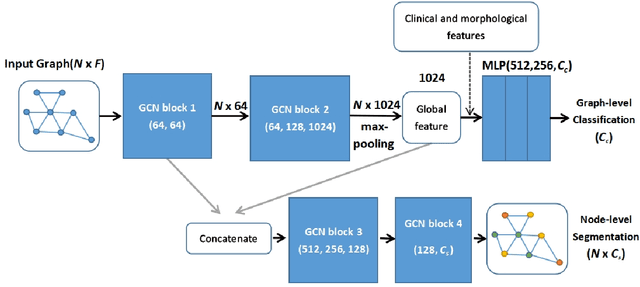
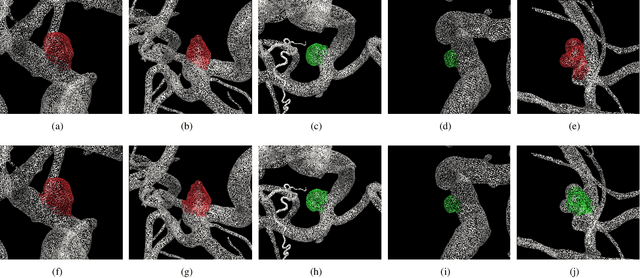
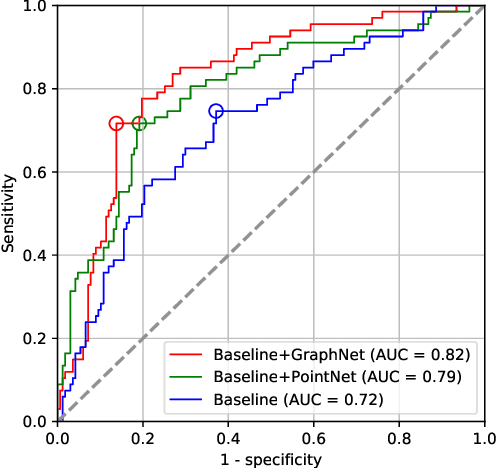
Abstract:Intracranial aneurysm (IA) is a life-threatening blood spot in human's brain if it ruptures and causes cerebral hemorrhage. It is challenging to detect whether an IA has ruptured from medical images. In this paper, we propose a novel graph based neural network named GraphNet to detect IA rupture from 3D surface data. GraphNet is based on graph convolution network (GCN) and is designed for graph-level classification and node-level segmentation. The network uses GCN blocks to extract surface local features and pools to global features. 1250 patient data including 385 ruptured and 865 unruptured IAs were collected from clinic for experiments. The performance on randomly selected 234 test patient data was reported. The experiment with the proposed GraphNet achieved accuracy of 0.82, area-under-curve (AUC) of receiver operating characteristic (ROC) curve 0.82 in the classification task, significantly outperforming the baseline approach without using graph based networks. The segmentation output of the model achieved mean graph-node-based dice coefficient (DSC) score 0.88.
Machine learning applied to single-shot x-ray diagnostics in an XFEL
Oct 11, 2016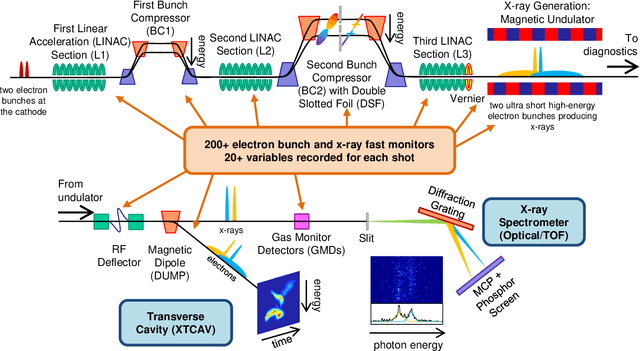
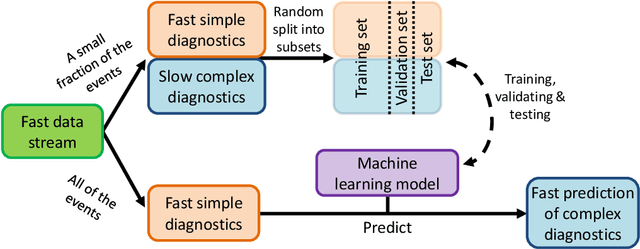
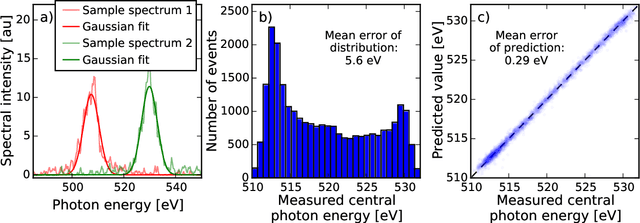
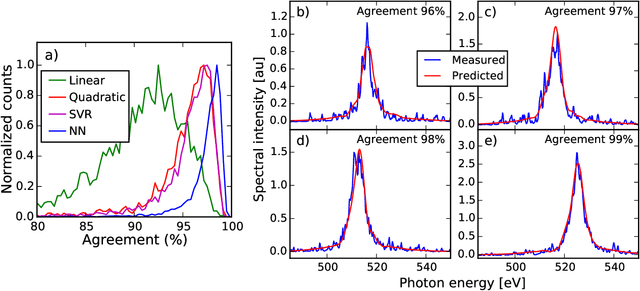
Abstract:X-ray free-electron lasers (XFELs) are the only sources currently able to produce bright few-fs pulses with tunable photon energies from 100 eV to more than 10 keV. Due to the stochastic SASE operating principles and other technical issues the output pulses are subject to large fluctuations, making it necessary to characterize the x-ray pulses on every shot for data sorting purposes. We present a technique that applies machine learning tools to predict x-ray pulse properties using simple electron beam and x-ray parameters as input. Using this technique at the Linac Coherent Light Source (LCLS), we report mean errors below 0.3 eV for the prediction of the photon energy at 530 eV and below 1.6 fs for the prediction of the delay between two x-ray pulses. We also demonstrate spectral shape prediction with a mean agreement of 97%. This approach could potentially be used at the next generation of high-repetition-rate XFELs to provide accurate knowledge of complex x-ray pulses at the full repetition rate.
* 12 pages, 8 figures
 Add to Chrome
Add to Chrome Add to Firefox
Add to Firefox Add to Edge
Add to Edge